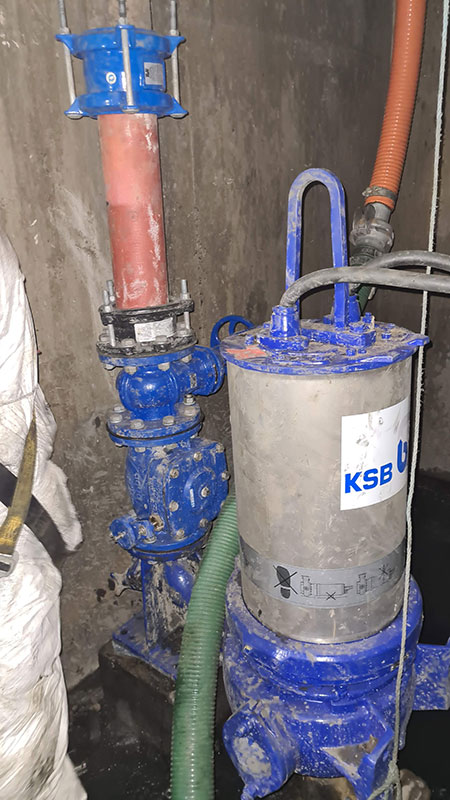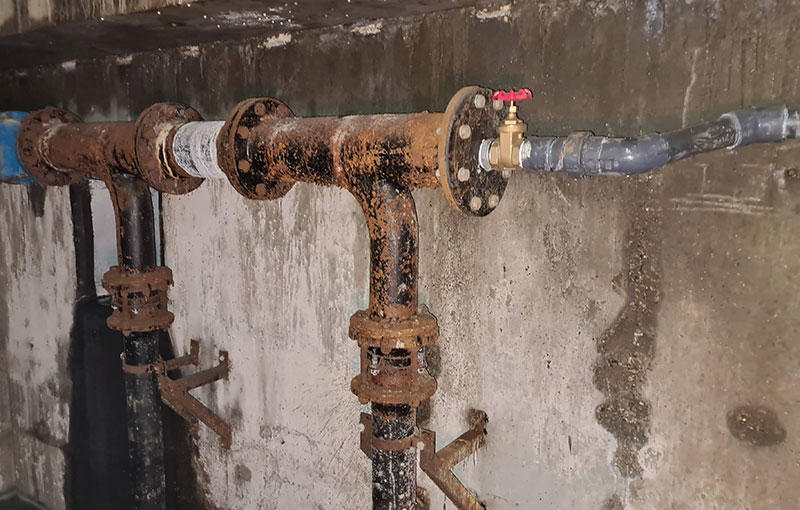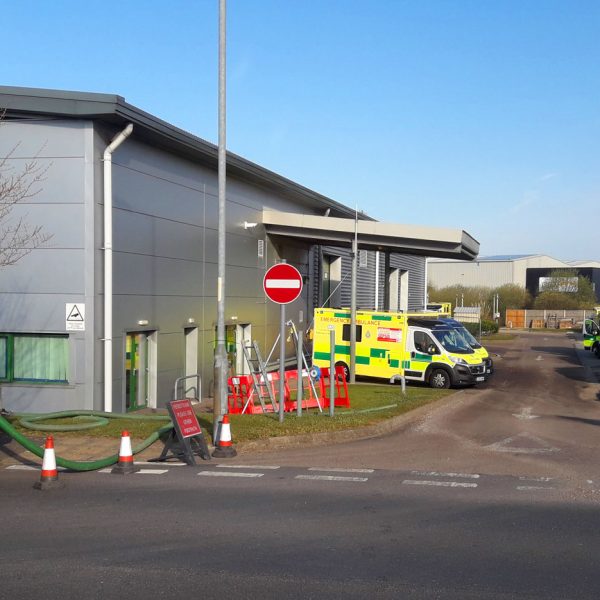Client
Main contractor
Sector
Residential
Project Type
Refurbishment
Products Used
MagnaGrand IP, Tankering
Onsite Duration
5 days
Location
London
INTRODUCTIONA west London office building was being converted into 300 residential units. An existing surface water pumping station needed to be repurposed to receive foul waste. The pumping station consists of a large dry well area and a smaller wet well. METHODSurface water can enter the dry well sump via two access covers. A small pit in the floor of the dry well is intended to collect this so that a 240V submersible pump can lift it into the discharge pipework at high level. However, this pump had failed allowing the surface water to fill the dry well and lift the access cover to the wet well. Consequently, on first attendance the dry well was filled with 5,000 gallons of foul waste. We de-watered the dry well with one of our tankers and washed it down. This enabled our assigned project manager to carry out a confined entry survey of the existing equipment. The DN100 ductile iron pipework of the existing pumping station was in good condition but the existing non-return valves and gate valves had seized and needed replacing. A quotation was submitted to the client and accepted. The pump station would remain live during the conversion, so a project plan was created to enable the work to be conducted safely and without disruption to the residents. Additionally, the plan ensured the pump station was never left inoperable overnight. The DN100 surface water pumps were replaced with dry well foul water handling pumps which offered the required flow rate. New non-return valves and gate valves were installed. A new control panel and ultrasonic sensor were installed, along with backup floats. The surface water pump was replaced, and new connection made to the main discharge pipework. The wet well was thoroughly cleaned by one of our combi-tankers to remove an accumulation of rag, fat and debris. RESOLUTIONThe pumping station was successfully converted to foul water and all existing problems were addressed. Excellent project management, along with our in-house fleet of tankers and HIAB vehicle, allowed us to complete this large refurbishment safely and without disruption of service. A service agreement proposal will be sent to the owner to provide planned preventative maintenance. 
The new pumps and valves.

The PVC pipework of the surface water pump connects to the ductile iron pipework.
|
|




